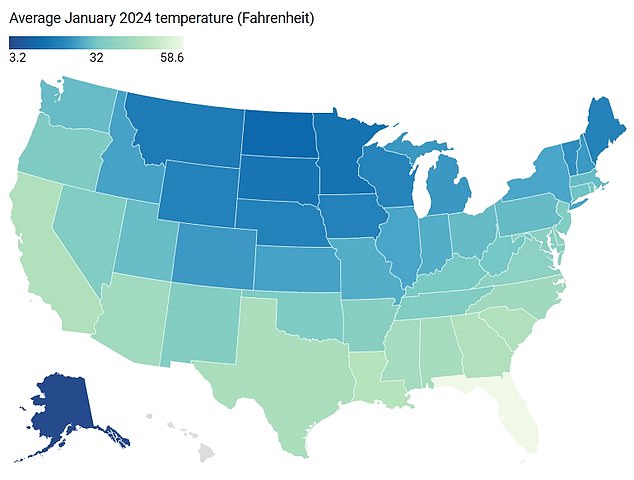If you’re a running enthusiast, the cold winter weather may make you think twice before going outside.
But Dr. Jessica Tomazic, a sports physician at the Cleveland Clinic, says it’s possible for hardcore runners to keep up with their favorite workout in frigid temperatures, as long as they take precautions.
Running is a great exercise for improving cardiovascular fitness and burning calories, but without proper preparation, it could be dangerous in cold weather and lead to muscle cramps, injuries, and even frostbite.
Cold weather causes the blood vessels in your muscles to constrict, dramatically reducing their supply of oxygen and nutrients, increasing the risk of injury. It may also be more difficult to breathe because the cold, dry air can irritate the airways and cause inflammation.
But Dr. Tomazic said: “There is no such thing as bad weather, only bad equipment.”
“Your body is exposed to an extreme environment, so it will work harder to maintain homeostasis (body temperature) balance.”
Before heading outside, Dr. Tomazic recommended a five to 10-minute internal warm-up, such as a quick jog around the living room or a yoga flow session.
This will raise body temperature and stimulate circulation, he said, helping prepare muscles for the cold and preventing injury.
Dr. Jessica Tomazic, a sports physician at the Cleveland Clinic, says it’s possible to run in frigid temperatures, as long as runners take precautions (file photo)

The map above shows the state-by-state temperature in January 2024. Many states had an average temperature below freezing.
Dr. Tomazic’s other tips for the 50 million runners in the U.S. included wearing at least three layers when running in below-freezing weather.
The first should be a base layer to capture moisture that evaporates from the skin and maintain body temperature, the second should be a mid layer to capture and retain heat, and the third should be a top layer to provide protection against heat. wind, rain or snow.
talking to Yahoo! LifeThe doctor also suggested covering your ears with ear muffs or warmers to prevent them from getting too cold and covering your hands with gloves to prevent hard, cracked skin.
He also said some runners might choose to wear face masks, which will keep the air reaching the lungs and around the face warm.
Running without protective clothing in subfreezing temperatures can lead to serious complications, experts warn.
A potentially serious injury includes frostbite, when the skin and underlying tissues freeze, which could lead to amputations in severe cases.
Hypothermia, when body temperature drops too low, is also a danger.
Sweating in cold weather while running increases the risk of these injuries because sweat reduces skin temperature when it evaporates.
Other tips included for keen runners include avoiding running on icy surfaces and staying in dry, sandy areas to avoid falls and injuries.
There are only two situations in which runners should avoid going outside in freezing temperatures, Dr. Tomazic said.
This occurs if temperatures drop below -8 Fahrenheit or -22.2 Celsius, which the American College of Sports Medicine says could lead to tissue injury within 30 minutes because extremely cold weather dramatically reduces blood supply to the muscles. muscles.
Or when there is a wind chill warning, which can cause your skin to freeze in just half an hour.
Across the United States, 27 states are expected to have an average temperature below zero (32 Fahrenheit (0 degrees Celsius) this January), which will cause many runners to reconsider going outdoors and possibly turning to the treadmill.


